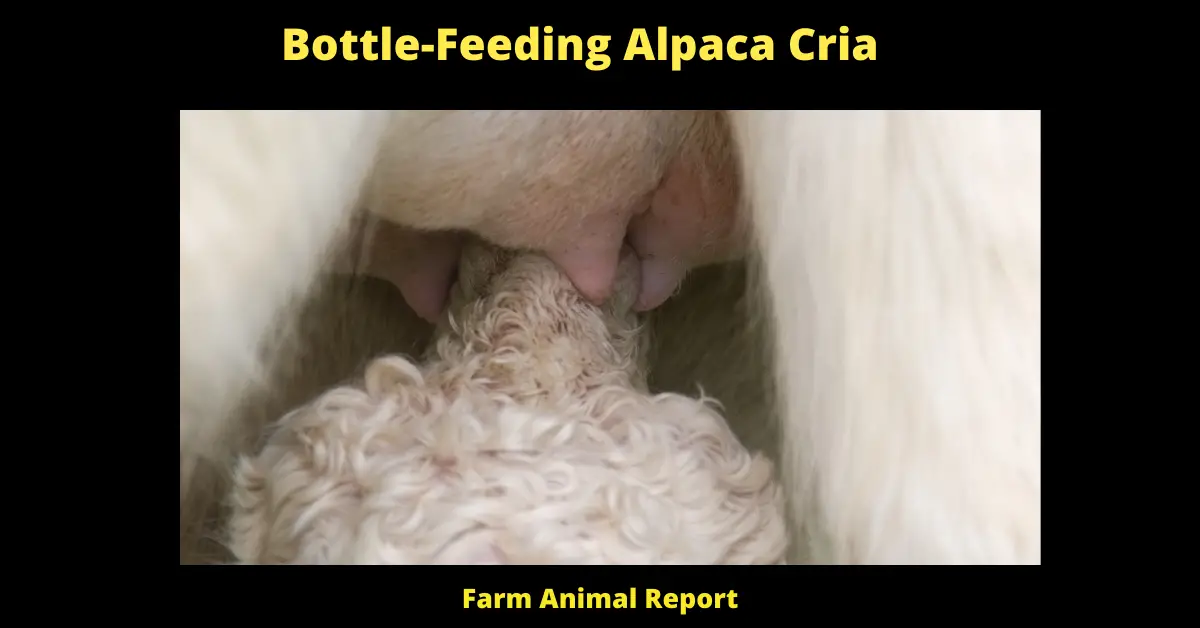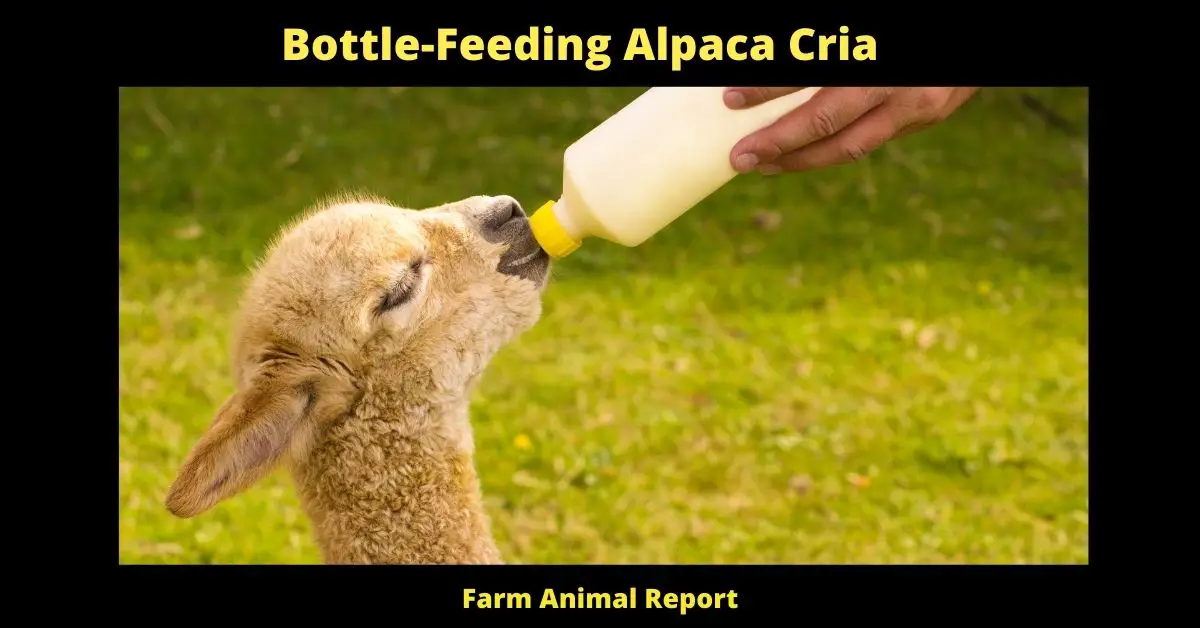As a general rule Crisa will need to be bottler fed if the mother dies during childbirth, is not able to produce milk, is ill. Some Alpaca farmers bottle feed all their newborns so that they can make sure that their babies are getting the complete nutrition they need.
Bottle-Feeding Alpaca Cria
Bottle feeding alpaca cria is an important process for alpaca farmers. The milk from the mother has a high-fat content and protein level, which is not present in the milk of other animals. This makes it crucial that a baby alpaca be nursed by its mother for at least six months to ensure the proper development of bones and teeth.
The Benefits of Bottle Feeding a Cria
Cria is similar to bottle-feeding a baby. In the case of crias, it is extremely important that they get colostrum from their mothers within the first 24 hours after birth in order for them to have antibodies and other nutrients necessary for survival. If a mother doesn’t produce enough milk or her babies don’t nurse efficiently, then you may need to feed the cria via bottle.
Crias that are bottle-fed can be introduced back into their herds with continued hand-to-mouth contact and proper socialization. They will still grow up in a herd environment but you may have to monitor them at first until they get used to being around other alpacas. In some cases, you may need to keep them separated.
Crias that are bottle-fed do not have the same bond with their mothers as if they were allowed to nurse naturally. However, cria will still learn about herd hierarchy regardless of how it is raised.
How to Bottle Feed a Cria
-If you are hand-feeding a cria, it is important to be patient and gentle. Be sure that the bottle opener has been trimmed if necessary (not too big). Feeding time should always be supervised because there could potentially be problems with the nipple. With baby animals like this, things can happen very quickly so being attentive is essential.
-When a cria is ready to feed, it will be looking around and searching for the udder. If you see this behavior, offer them some of your milk from a bottle. They might not take more than a few sucks at first but that’s okay as long as they are trying! After making sure they have had enough colostrum (the first milk they received from their mothers), you can start bottle feeding them the formula.
-If a cria is having trouble latching onto the nipple, it might help to dip the end in some molasses or Karo syrup. This will give them something to lick and encourage oral stimulation which could make things easier.
-Another important thing to remember is that alpaca milk does not contain a lot of lactose (milk sugar) like cow’s milk does. This means that you will need to use more Karo syrup or molasses than you would if the cria was feeding on cows’ milk instead. Most breeders mix their milk replacer with about 50% water to cut down on the cost.
-Make sure that you are not adding too much Karo syrup or molasses though! Too much of these sweeteners will make the milk taste less like milk and more like caramel (which is not what we want). You might need to experiment a little bit until you find the perfect balance.

-It is also very important to make sure that you are feeding them enough because both too little or too much could be deadly for a cria! They should always feel plump and full before each feeding (pushing on their sides will help with this). If they don’t seem satisfied after drinking half of their bottle, they will need more. If a cria is too skinny and seems unsatisfied after drinking their entire bottle, it might be time to give them another feeding in about an hour or so.
-If you think that a cria isn’t getting enough milk from the mother alpaca then you can help supplement with formula but only until the cria is about two weeks of age. After that, you will need to switch them over to grass or hay instead because alpaca milk does not have enough nutrients for a growing cria.
How Often to Bottle Feed a Baby Alpaca?
A baby alpaca should be bottle-fed every two hours for the first six weeks, then four times a day until they are weaned. It is important to keep them warm and dry at all times during this period. If the baby alpaca is out in cold and wet weather, it will catch a chill. The cria needs to be kept dry because their woolly coats do not provide them with any protection against bad weather conditions.
Common Problems When Bottle Feeding
Cria not taking the bottle: If your cria is having a hard time latching, or does not want to take the bottle at all. You need to check for signs of illness and dehydration in order to know what steps you will need to take next.
The problems with failure-to-thrive come from two main causes. One is hypothermia, the other is failure to supply adequate nutrition in a timely manner.
You should also consider that your cria may not be hungry or thirsty at all! If it’s been nursing for some time before you attempted to bottle feed, then it has already filled its belly with momma’s milk and will need some time to digest.
The best thing you can do is keep the cria warm and wait until it starts looking for its bottle again before trying to feed it. If this goes on, then your baby will need supplemental heat in order to get warm enough to have an appetite.
Cria taking too much milk: Overfeeding of alpaca cria can be just as dangerous as not feeding them at all. A cria will nurse until it is full, but with a bottle, the milk continues to flow no matter if your baby has had enough or not!
Jump to Newborn Alpacas-Baby Alpacas-Extensive Guide
The Temperature of Milk Replacer
The milk must also have been heated up to 102 degrees Fahrenheit before being given to the alpaca cria.
This is important because when milk has been refrigerated it can actually cause stomach upset for the cria if given to the cold! This results in a very painful experience that will make your baby even more reluctant to take its bottle from you next time.
In order to avoid sickness and diarrhea in alpaca crias, the temperature of the milk replacer must be maintained between 90-103 degrees Fahrenheit. If it is too cold or hot for your cria’s stomachs to handle then they will get sick and this can lead to death very quickly!
Alpaca Crias are prone to getting diarrhea because their immune systems have not fully developed yet. If they ingest something that their body does not like, then the cria may start to experience stomach problems and diarrhea as a result of this.
Final Thoughts
In Summary
Bottle feeding alpaca cria is a very rewarding experience for any new mom or dad. As long as you have the patience and follow these guidelines, then there should be no problems at all!


